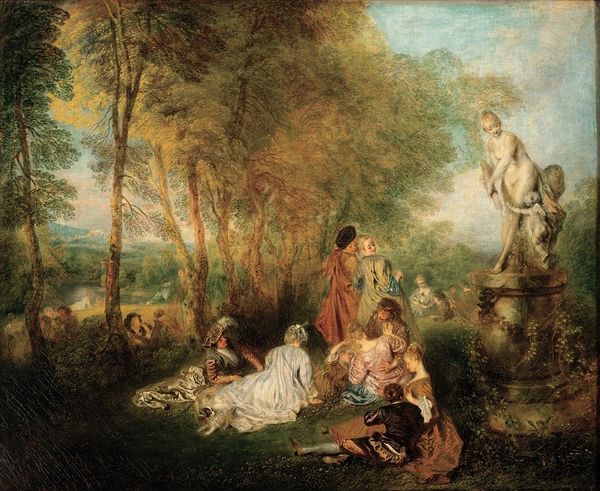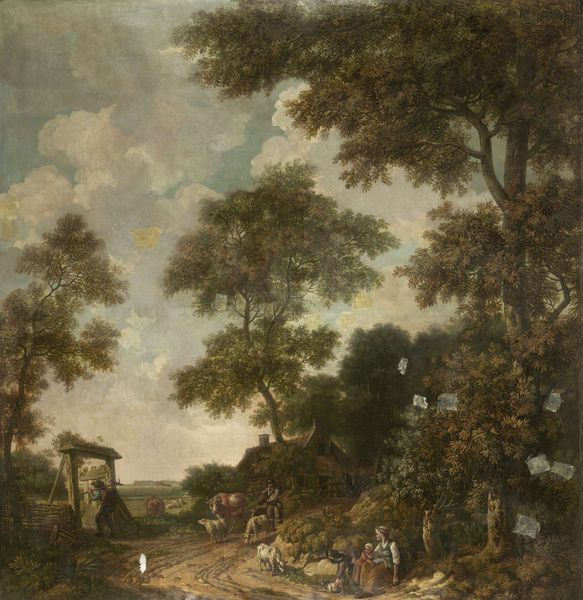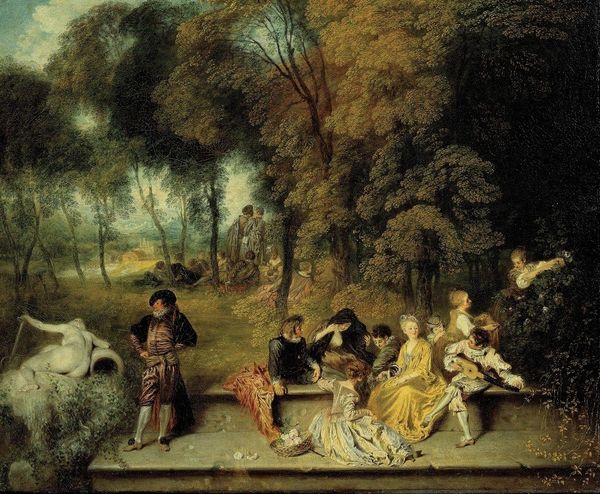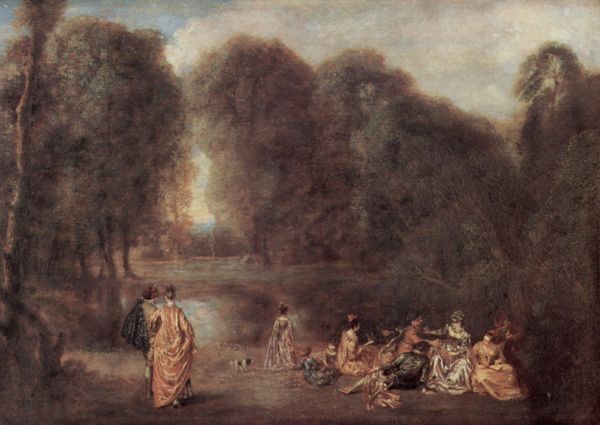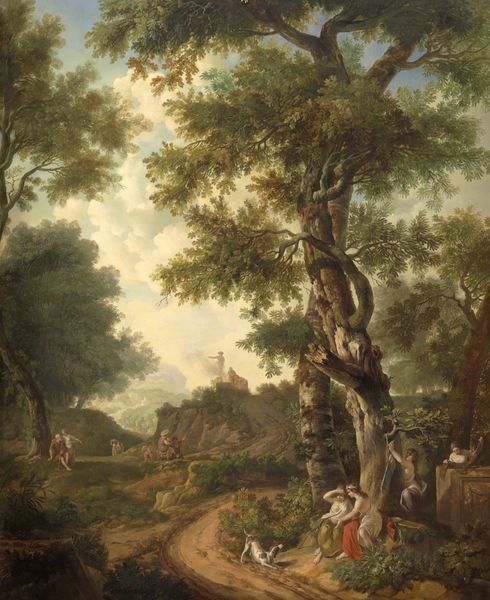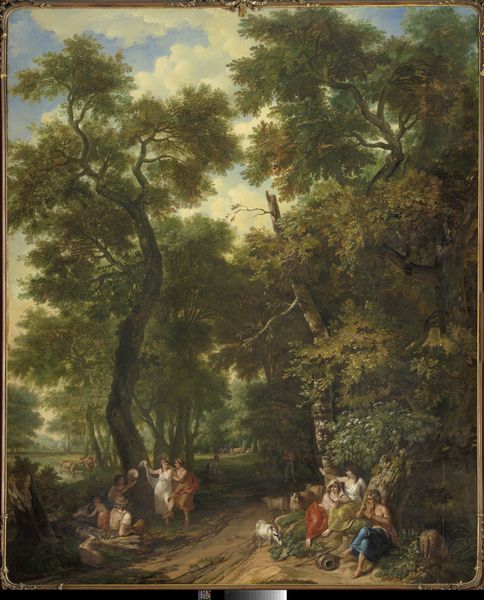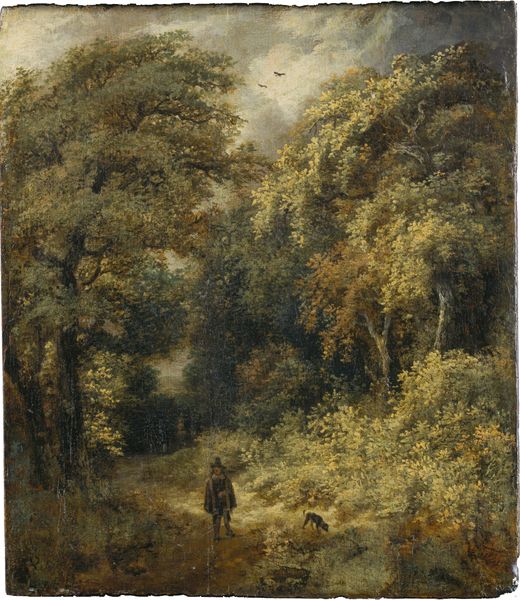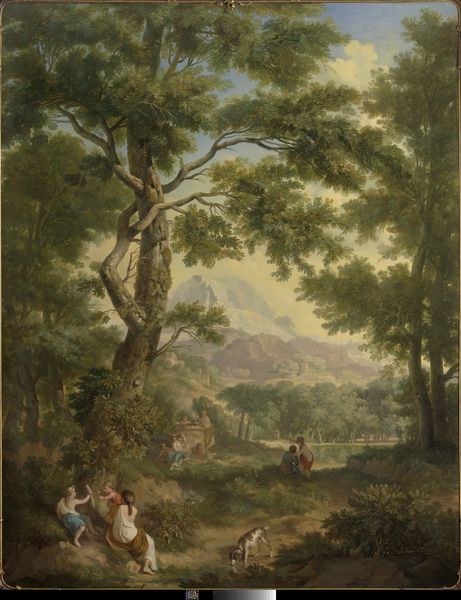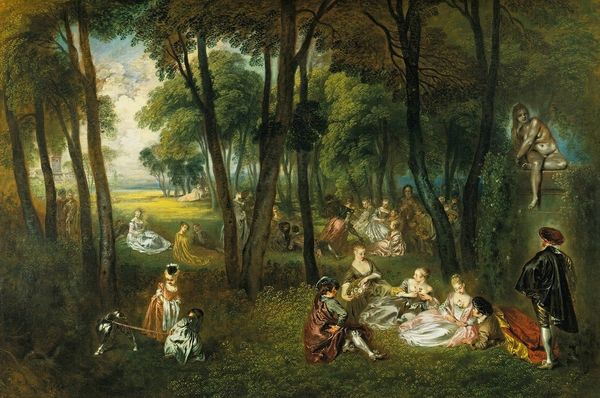
painting, oil-paint
#
conversation-piece
#
painting
#
oil-paint
#
landscape
#
figuration
#
genre-painting
#
rococo
Dimensions: 46.9 x 56.7 cm
Copyright: Public domain
Editor: So, this is "The View," an oil painting by Jean-Antoine Watteau, created around 1715. The colors and composition evoke a feeling of peaceful observation. It makes me wonder about the narrative that the landscape creates. What do you see in this piece? Curator: Indeed. From a formalist perspective, the rhythmic arrangement of light and shadow structures our experience. Notice how the composition leads the eye towards the vanishing point, not through linear perspective alone, but through a carefully orchestrated distribution of tonal values and chromatic intensities. How do the groupings of figures impact the viewer’s experience of space and form? Editor: It's true that they are little points that the eyes follows along into the painting and towards the "view." I am still trying to find meaning in the groups' gazes, as their eyes wander within their company. What can one assume from their posture and stance? Curator: I find it more intriguing to look at the artist's execution, the visible brushstrokes, or the deliberate layering of pigment. These, I believe, determine the significance, generating a tension between representation and abstraction that transcends any allegorical intent. The contrast in textures draws one's vision to every person depicted. Editor: Interesting perspective. Focusing on the paint itself allows the image to come to life and really enlivens my visual senses, by paying closer attention to tonality and how my eye dances across its figures. I can truly enjoy this Rococo masterpiece. Curator: Precisely. A concentrated engagement with the formal qualities provides a richer understanding. This piece moves beyond simple representation by prioritizing aesthetic arrangement above literal representation.
Comments
No comments
Be the first to comment and join the conversation on the ultimate creative platform.
